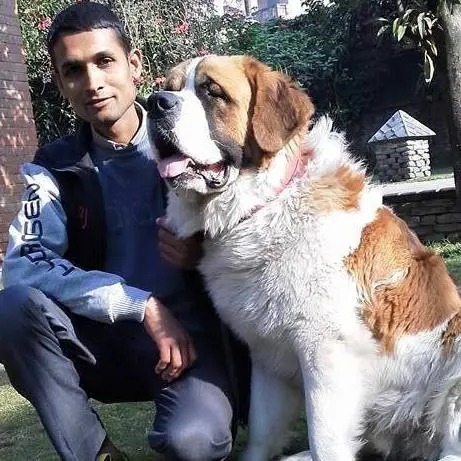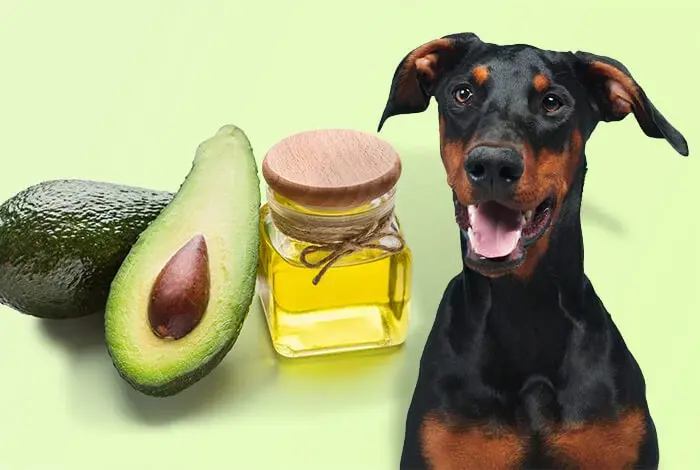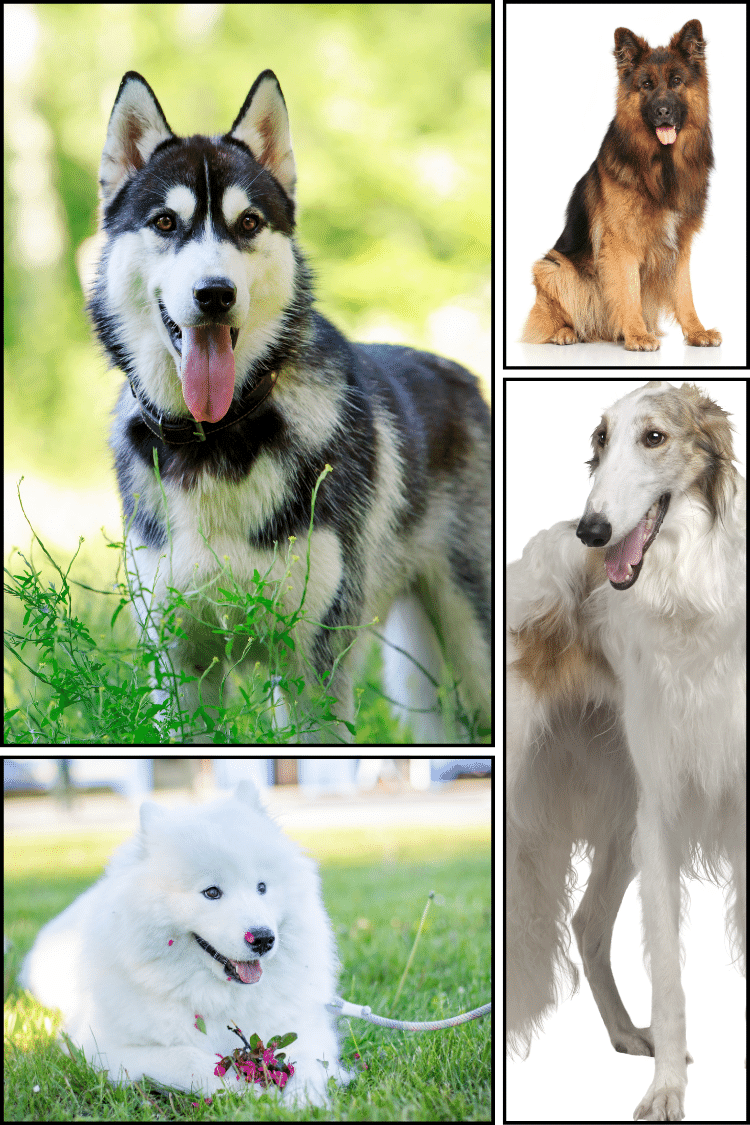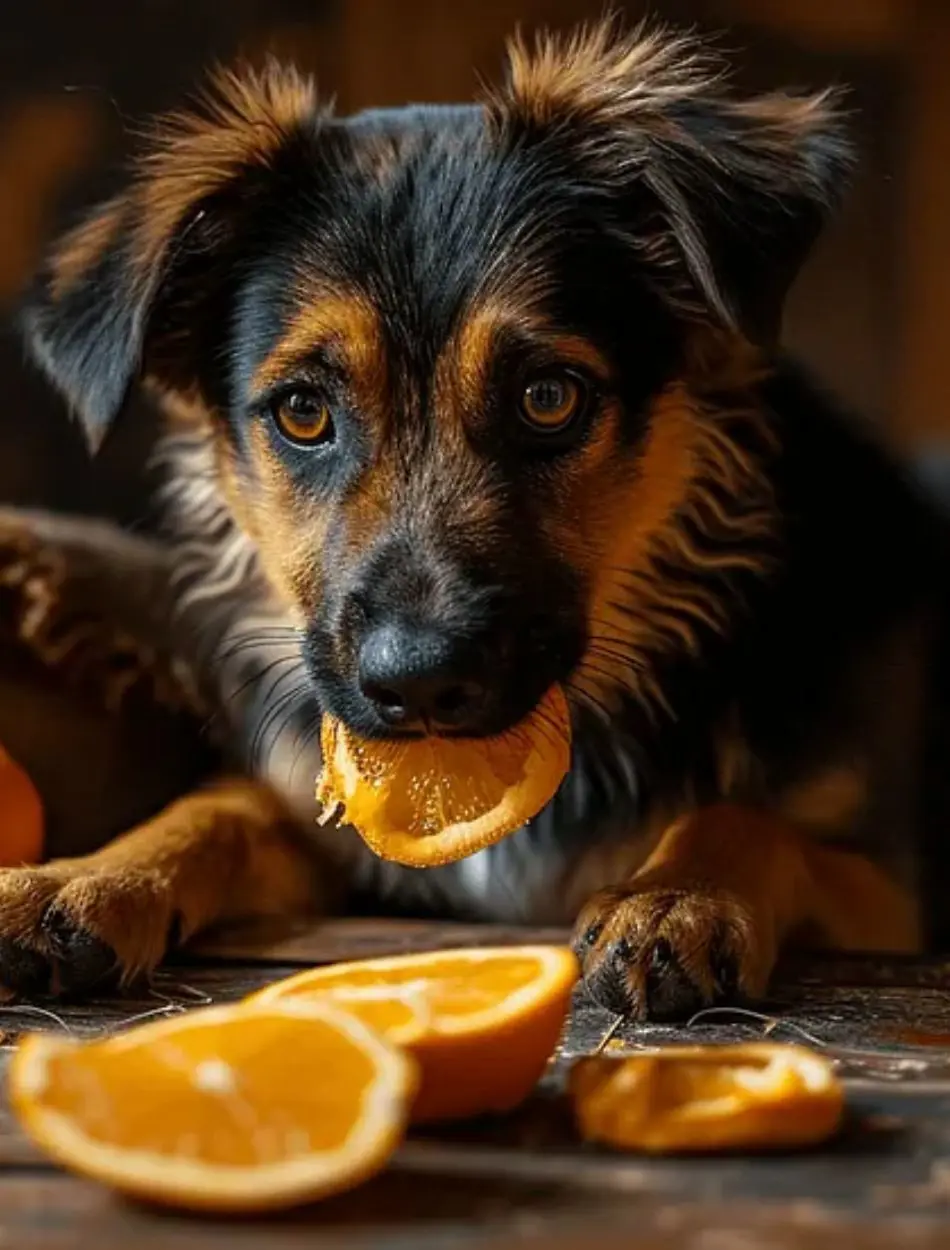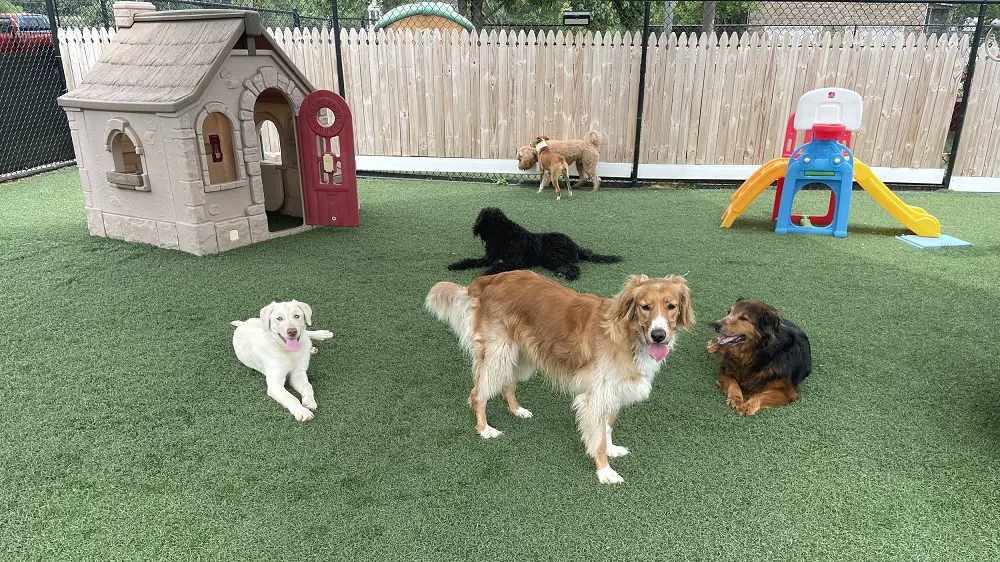Cavalier King Charles Spaniel Profile Information
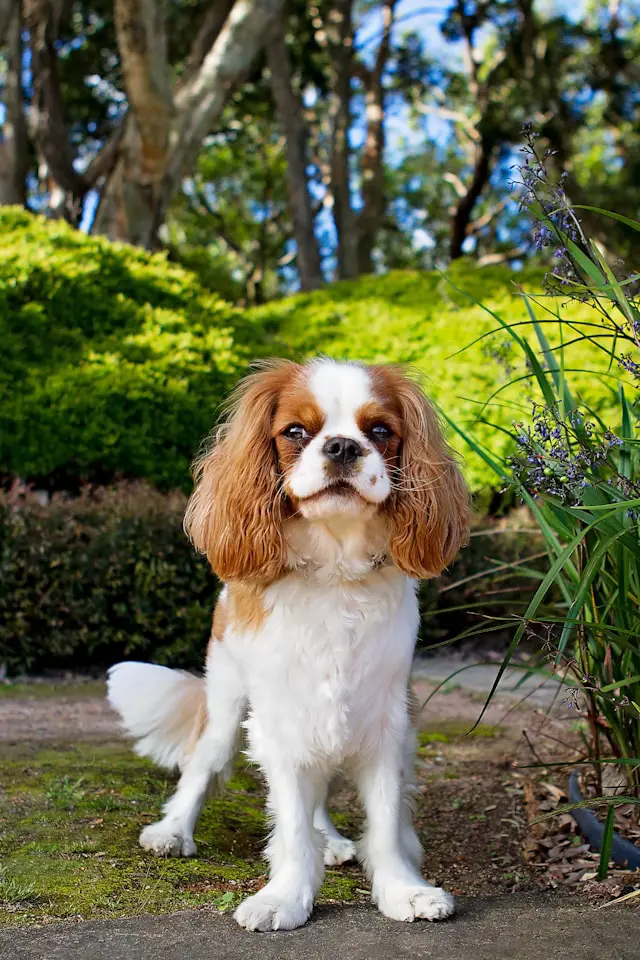
This beloved toy breed charms with its silky coat, floppy ears, and feathered features. Known for their affectionate nature and family-friendly temperament, Cavalier King Charles Spaniel blend lap dog comfort with playful energy.
Though they're a newer breed in America, they have a royal history. Below, we've listed the profile of this delightful breed, exploring why this small spaniel with a big heart captures the affection of dog lovers worldwide.
Cavalier King Charles Spaniel Breed Overview
- Origin: United Kingdom
- Height: 12 to 13 inches (to the withers)
- Weight: Approximately 13 to 18 pounds
- Life Span: 12 to 14 years
- Temperament: Playful, affectionate, patient, graceful, sociable, gentle
- Hypoallergenic: No
- Coat: Long, sleek and silky coat with feathering around ears, feet, chest, and tail
- Coat Color: Four color varieties include tricolor, Blenheim (red and white), ruby, and black and tan
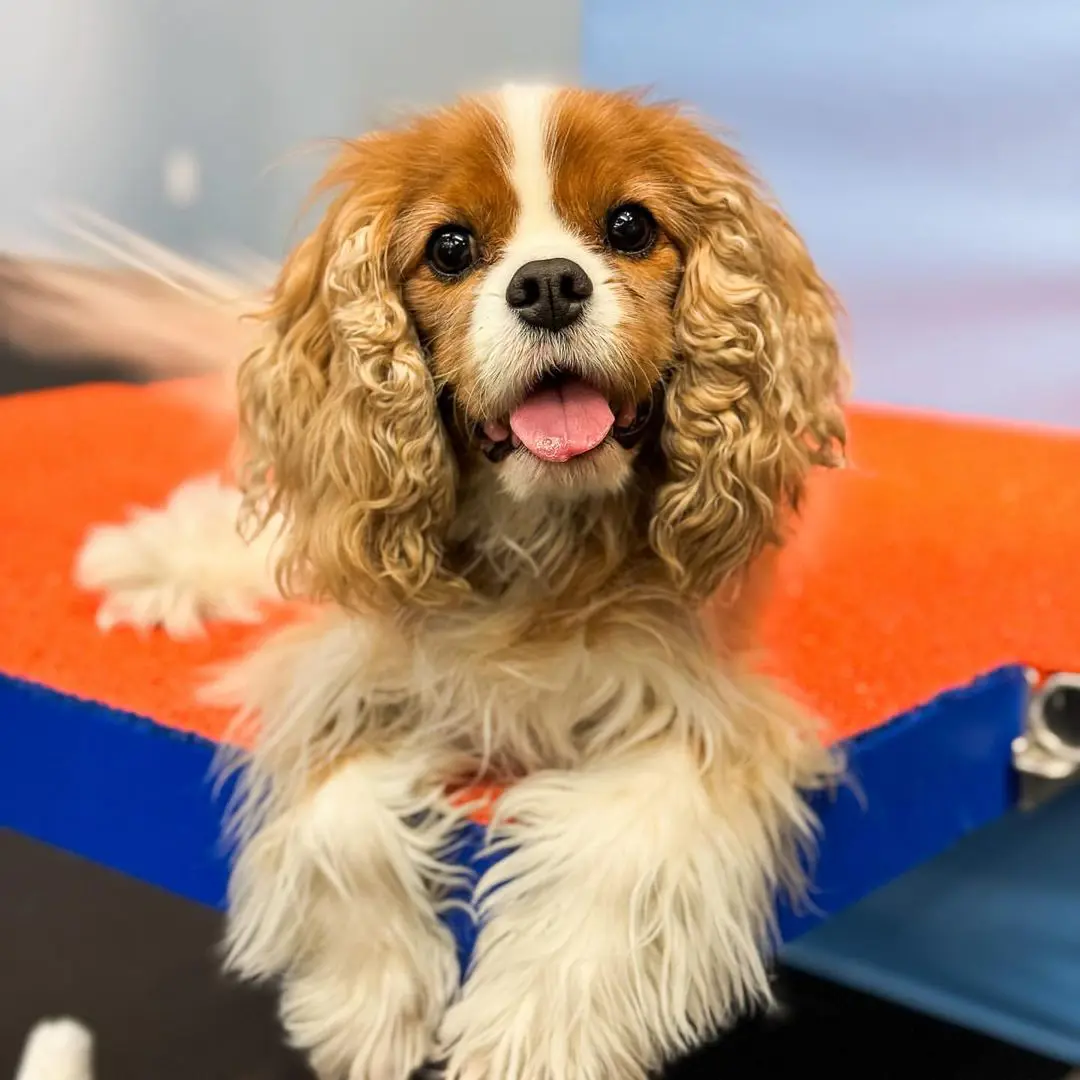
Characteristics of the Cavalier King Charles Spaniel
The Spaniels breeds Cavalier King Charles is known for its charming personality and adaptable nature. These dogs are:
- Incredibly affectionate
- Sociable and happy-go-lucky
- Eager to please
Cavaliers thrive in the company of humans and other dogs, making them ideal for households where they won't be left alone frequently. They can be excellent family pets and are popular with elderly people due to their moderate energy levels and easygoing nature.
While generally kid-friendly, it's important to remember:
- Children should be taught how to interact appropriately with dogs
- All dogs, even tolerant breeds, need undisturbed time while sleeping or eating
Key traits of the Cavalier King Charles Spaniel:
- High: Affection level, Friendliness, Kid-friendly, Pet-friendly, Trainability
- Medium: Exercise needs, Playfulness, Energy level, Intelligence, Tendency to bark, Amount of shedding
History of Cavalier King Charles Spaniels
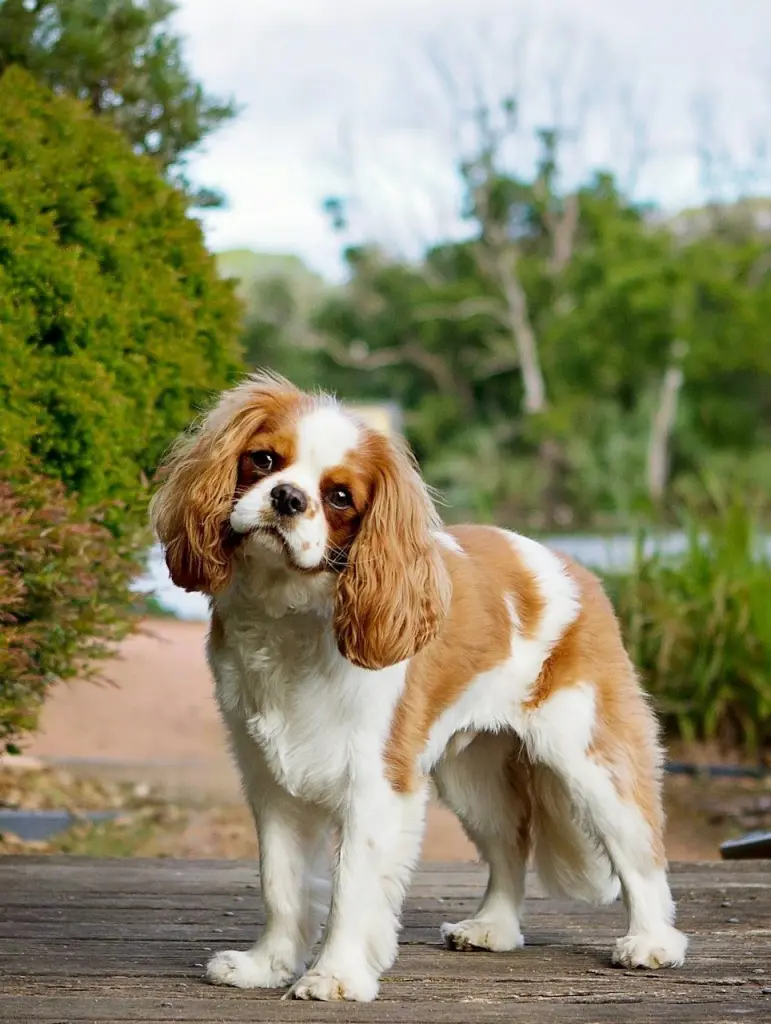
The King Charles Cavalier Spaniel history closely tied to European nobility, particularly in England. This breed's story spans several centuries:
17th Century Origins:
- Known as toy spaniels with varying appearances
- Favored by King Charles I and King Charles II, inspiring the breed's name
- King Charles II allowed these dogs in all public buildings, including Parliament
Notable Associations:
- The Blenheim color variant was named after Blenheim Palace, home of the First Duke of Marlborough, John Churchill
- Queen Victoria's childhood companion was a Cavalier King Charles Spaniel named Dash
Breed Evolution:
During Queen Victoria's era, toy spaniels were crossed with flat-faced Asian breeds like Pugs and Japanese Chins. This led to the development of the English Toy Spaniel (known as the King Charles Spaniel in the UK).
Revival and Modern Recognition:
- 1920s: Breed enthusiasts worked to revive the original spaniel look from King Charles II's time
- 1995: The American Kennel Club officially recognized the breed
- 2018: Ranked as the 18th most popular breed by the AKC
Cavalier King Charles Spaniel Size and Personality
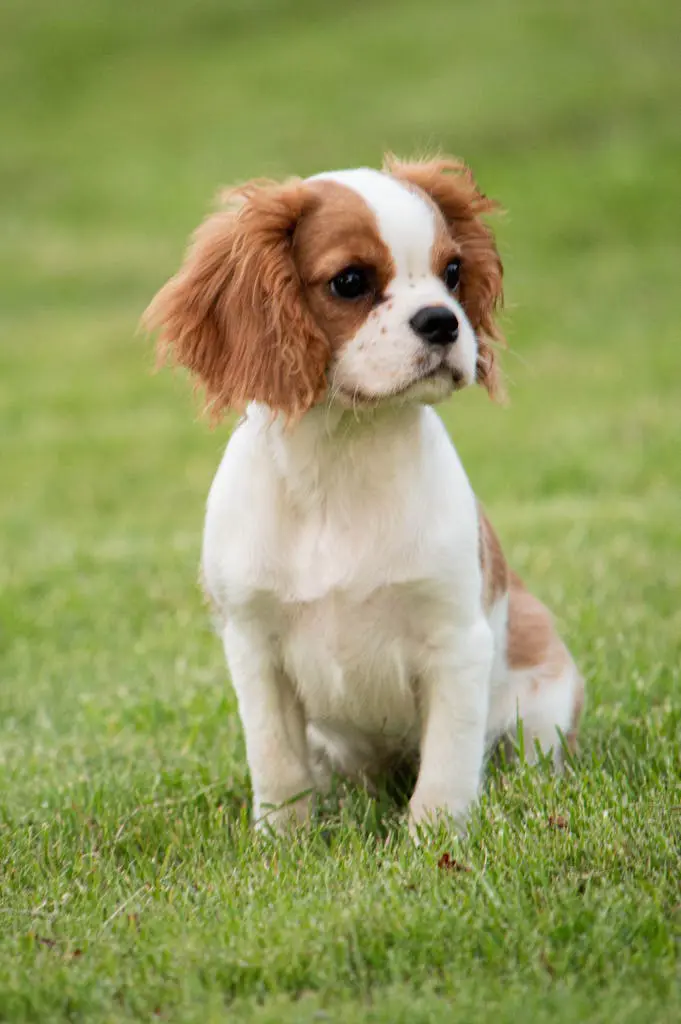
Size:
Cavalier King Charles Spaniels are small but robust dogs. They typically stand 12 to 13 inches tall at the shoulder and weigh between 13 to 18 pounds. It's important to note that there is no "toy" variety of this breed - all Cavaliers fall within this size range.
Personality:
Cavaliers are known for their friendly and outgoing nature. They embody the spirit of Will Rogers' famous quote about never meeting a stranger. These dogs are typically eager to meet everyone they encounter, whether human or animal. They're especially happy if these encounters result in a lap to sit on or a treat to enjoy.
While Cavaliers generally share a sociable disposition, individual personalities can vary:
- Some may be quiet and calm
- Others might be more energetic and playful
When it comes to their watchdog abilities, Cavaliers often fall short. Many won't bark when someone comes to the door, making them poor choices for home security.
Their friendly nature means they're more likely to welcome an intruder than deter one. However, there are always exceptions - some Cavaliers may be more vocal and alert their owners to neighborhood happenings or approaching strangers.
The breed's affectionate nature makes them excellent companions. They often form strong bonds with their families and are adaptable to various living situations. Whether in a bustling household or a quiet home, Cavaliers typically adjust well, always seeking out human companionship.
Cavalier King Charles Spaniel Care
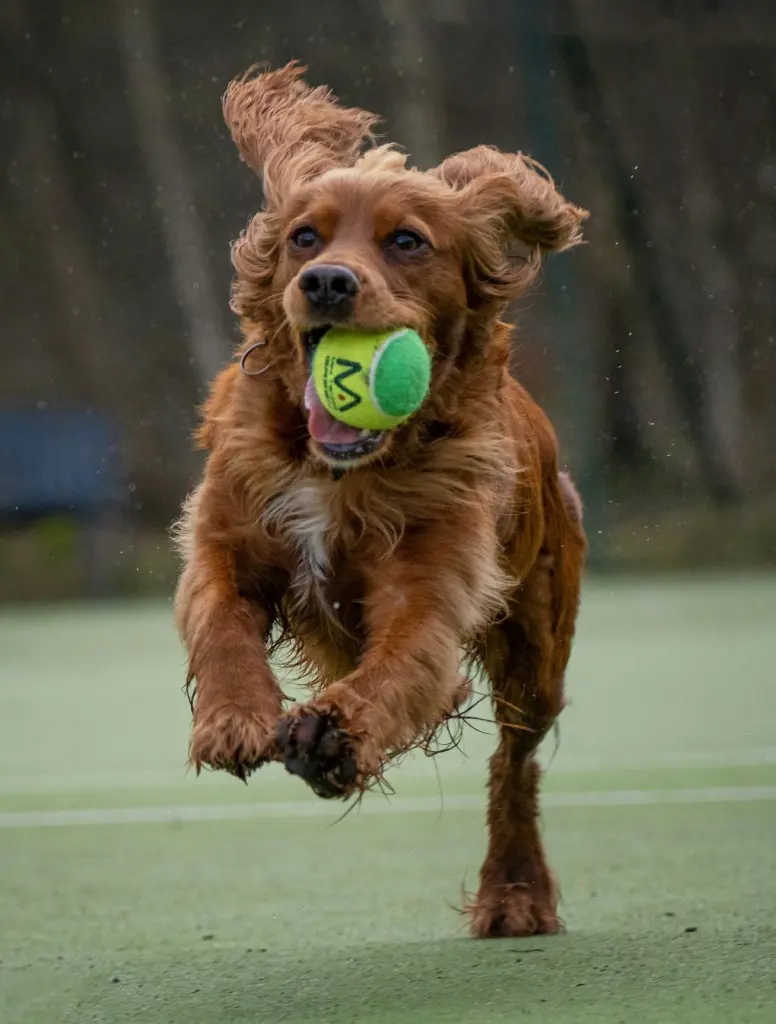
Cavaliers are charming, affectionate dogs that require thoughtful care to thrive. While they love cuddling, they're not couch potatoes and need regular exercise and mental stimulation. Here's what you should know about caring for these charming dogs:
Exercise:
These small dogs have surprising energy levels. Aim for 30 to 60 minutes of daily exercise, which can include walks, playtime, or a combination of both. A good routine might involve a 30-minute walk followed by 30 minutes of fetch or other games. This helps keep your Cavalier physically fit and mentally stimulated.
A well-exercised Cavalier is typically calmer and better-behaved at home. However, be mindful not to overexert them, especially in hot weather, as they can be sensitive to heat.
Grooming:
Cavaliers have beautiful, silky coats that require regular maintenance. Their fur, particularly around the ears and feet, can easily become tangled if neglected. Plan on brushing your Cavalier several times a week to prevent matting and keep their coat looking its best.
Some owners opt for regular professional grooming or keep their Cavalier's coat clipped shorter for easier maintenance, especially in warmer climates. While they do shed, it's not excessive if you keep up with regular brushing.
Don't forget about other grooming needs like nail trimming, teeth cleaning, and regular ear checks to prevent infections.
Training:
Cavaliers are generally a joy to train. They're eager to please, intelligent, and very food-motivated, which makes positive reinforcement training highly effective. Start training early and be consistent to develop good habits.
These dogs often excel in obedience and agility competitions, showcasing their versatility and intelligence. However, remember their spaniel heritage – their hunting instincts may occasionally surface. It's crucial to teach a reliable recall and supervise them around small animals.
Socialization is also important. Expose your Cavalier to various people, animals, and environments from a young age to ensure they grow into well-rounded, confident adults.
With the right balance of exercise, grooming, and training, your Cavalier King Charles Spaniel will be a delightful, well-behaved companion. Their moderate needs combined with their loving nature make them adaptable to various lifestyles, from active families to seniors seeking a affectionate companion.
Diet and Nutrition: Feeding Cavalier King
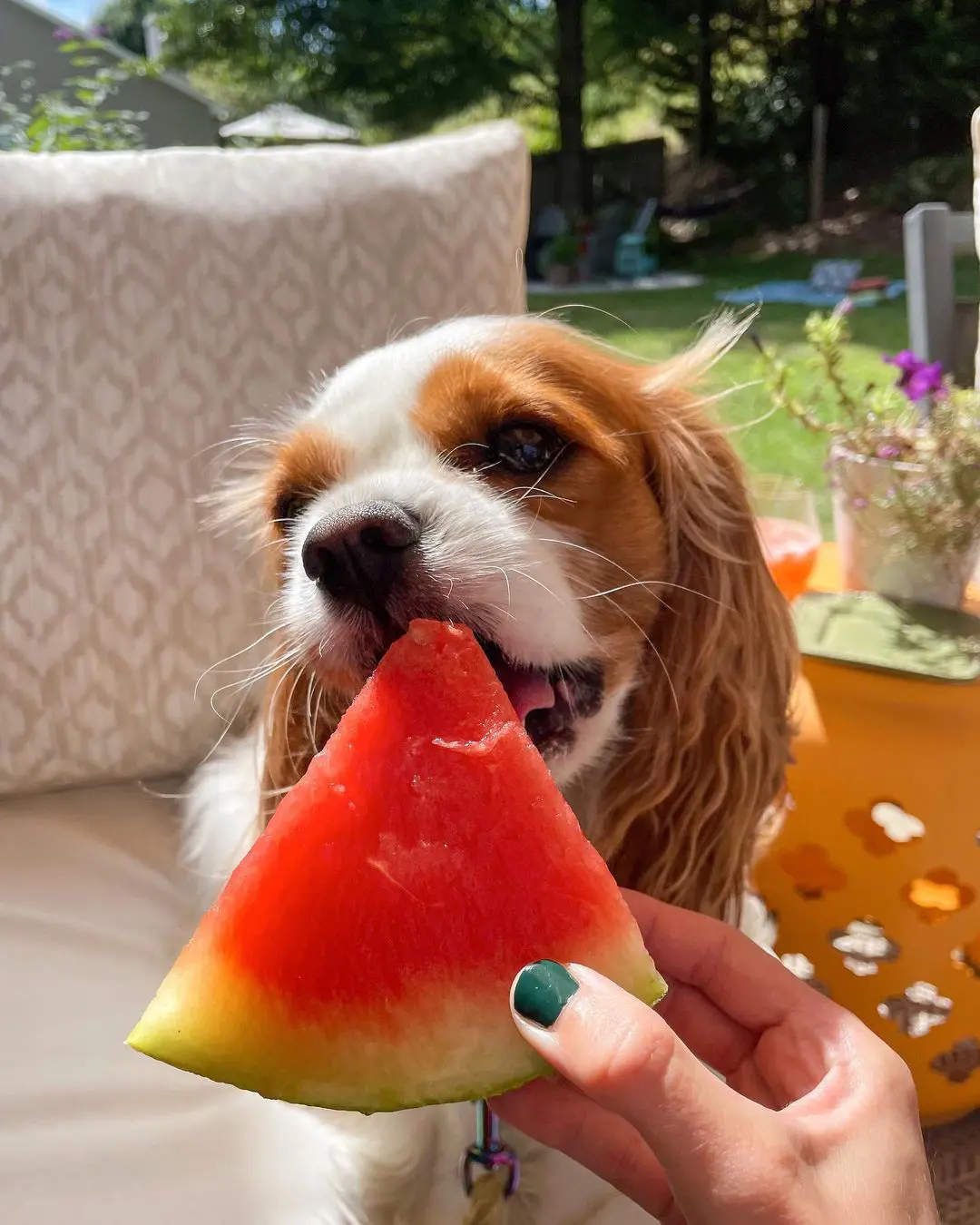
Feeding your Cavalier King Charles Spaniel properly is crucial for their health and well-being. These charming dogs have specific nutritional needs that should be carefully met.
Choose a high-quality dog food formulated for small or toy breeds. These foods are designed to meet the unique energy requirements of smaller dogs like Cavaliers. The kibble size is also more appropriate for their smaller mouths.
Portion control is key with Cavaliers. This breed has a tendency towards obesity, which can lead to various health issues. Follow the feeding guidelines on the food packaging, but remember these are just starting points. Your dog's ideal portion size may vary based on their age, activity level, and metabolism.
Be wary of those pleading puppy dog eyes! Cavaliers are masters at begging, but overfeeding can quickly lead to weight gain. Treats should make up no more than 10% of their daily caloric intake.
If your Cavalier tends to eat too quickly, consider using a slow-feed bowl or puzzle feeder. These tools not only slow down their eating but also provide mental stimulation. You can also divide their daily food allowance into multiple smaller meals throughout the day.
Regular weigh-ins and body condition assessments can help you maintain your Cavalier at a healthy weight. If you're unsure about your dog's dietary needs, consult with your veterinarian. They can provide personalized advice based on your Cavalier's specific health status and lifestyle.
Health Problems in Cavalier King Charles Spaniels
Cavalier King Charles Spaniels, while beloved for their charming personalities, are unfortunately prone to several health issues. This is partly due to their rising popularity and some irresponsible breeding practices.
If you're considering a Cavalier puppy, it's crucial to find a reputable breeder who conducts appropriate health screenings on the parent dogs. Here are some of the main health concerns associated with the breed:
Heart Disease:
Mitral Valve Disease (MVD) is particularly common in Cavaliers. It often starts with a heart murmur at a young age and progresses over time, potentially leading to heart failure. While medication can help manage the condition, there's no cure, and it can result in premature death.
Syringomyelia (SM):
This serious condition involves fluid-filled cavities forming in the spinal cord near the brain. It's progressive and can cause significant pain and discomfort. While incurable, pain management is often possible. One early symptom is excessive neck scratching, leading to its nickname "neck scratchers disease."
Joint Problems:
Cavaliers are prone to hip dysplasia and luxating patella (a kneecap that easily becomes dislocated). These conditions can affect mobility and cause pain.
Eye Problems:
The breed is susceptible to various eye issues, including:
- Cataracts
- Dry eye syndrome
- Cherry eye
- Corneal ulcers
These conditions can affect vision and may require ongoing management or surgical intervention.
Regular veterinary check-ups are essential for Cavaliers to catch and manage these issues early. While these health problems can be concerning, many Cavaliers lead happy, healthy lives with proper care and attention to their specific needs.
Responsible breeding practices and increased awareness can help improve the overall health of the breed in the long term.
Where to Adopt or Buy a Cavalier King
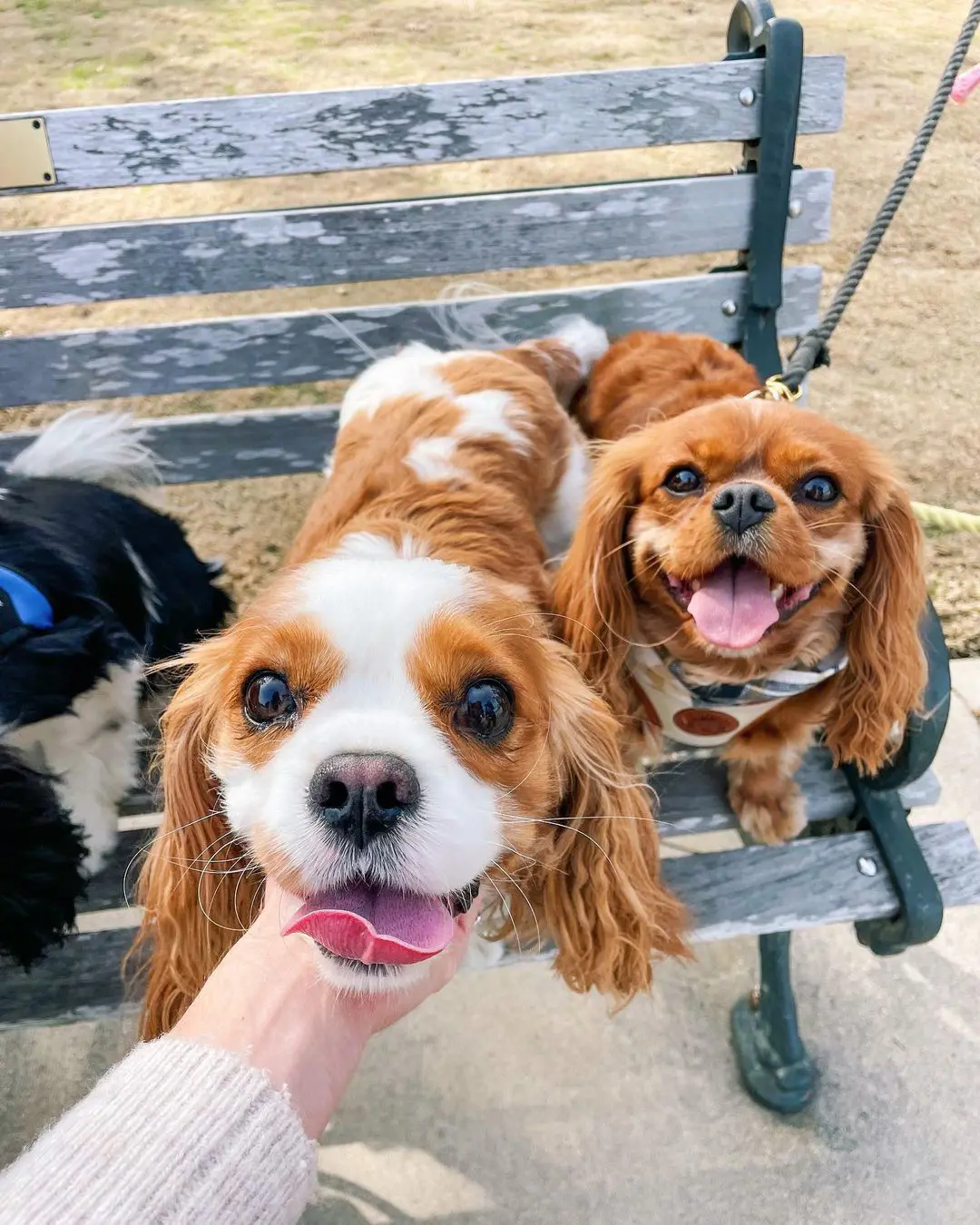
The popularity of breeding Cavalier King Charles Spaniels can unfortunately attract unscrupulous breeders and puppy mills. To ensure you get a healthy, well-socialized puppy, follow these guidelines:
- Always see the mother and puppies together in a nurturing home environment
- Observe the living conditions and the health of both mother and puppies
- Puppies should be at least eight weeks old and fully weaned before going to their new home
- Ensure the puppy has had a vet check and received initial vaccinations
- Ask for health clearances for both parent dogs, particularly for heart and eye conditions
Pricing:
- Cavalier puppies typically cost between $1,000 to $2,500, depending on the breeder
- Higher prices don't always guarantee better quality, so do your due diligence
Adoption options:
- Many wonderful Cavalier King Charles Spaniels are available through rescue organizations
- Rescued Cavaliers may be adults or seniors, offering a calmer alternative to puppies
- Adoption fees are usually lower than purchasing from a breeder
Where to start your search:
Cavalier King Charles Spaniel Club
- Offers breeder and rescuer contacts on their website
- Can provide guidance on breed standards and health considerations
Cavalier Rescue USA
- Specializes in rescuing and rehoming Cavaliers
- Often have a range of ages and temperaments available
Whether buying from a breeder or adopting from a rescue, take your time to find a healthy, happy dog that fits well with your family and lifestyle. Don't hesitate to ask questions about the dog's health, background, and temperament.
Dog Breeds Similar to Cavalier King Charles Spaniel
If the Cavalier King Charles Spaniel seems like a great dog for your family, consider exploring these similar breeds:
- Japanese Chin
- Brittany Spaniel
- Cavapoo (a mix of Cavalier King Charles Spaniel and Poodle)
Each of these breeds shares some characteristics with the Cavalier but also has its own unique traits:
1. Japanese Chin:
- Known for its elegant, cat-like demeanor
- Smaller size, making it suitable for apartment living
- Affectionate and loyal, but can be slightly more independent than Cavaliers
2. Brittany Spaniel:
- More energetic and athletic than the Cavalier
- Excellent for active families who enjoy outdoor activities
- Intelligent and eager to please, making them highly trainable
3. Cavapoo:
- Combines the gentle nature of the Cavalier with the intelligence of the Poodle
- Often hypoallergenic, thanks to the Poodle influence
- Typically friendly, adaptable, and good with children
With the vast array of dog breeds available, thorough research is key to finding the perfect match for your lifestyle. Consider factors such as:
- Energy level and exercise needs
- Size and space requirements
- Grooming needs
- Trainability and intelligence
- Health considerations and lifespan
- Compatibility with children and other pets
Top Lists
